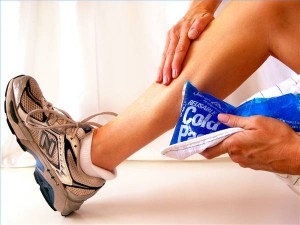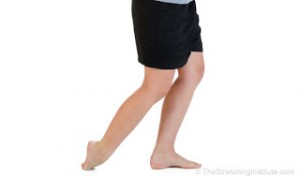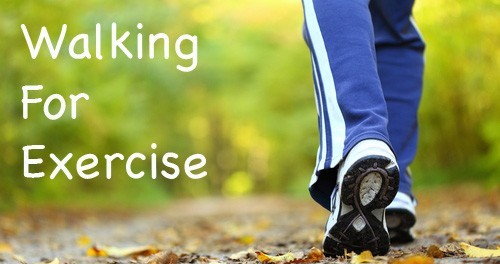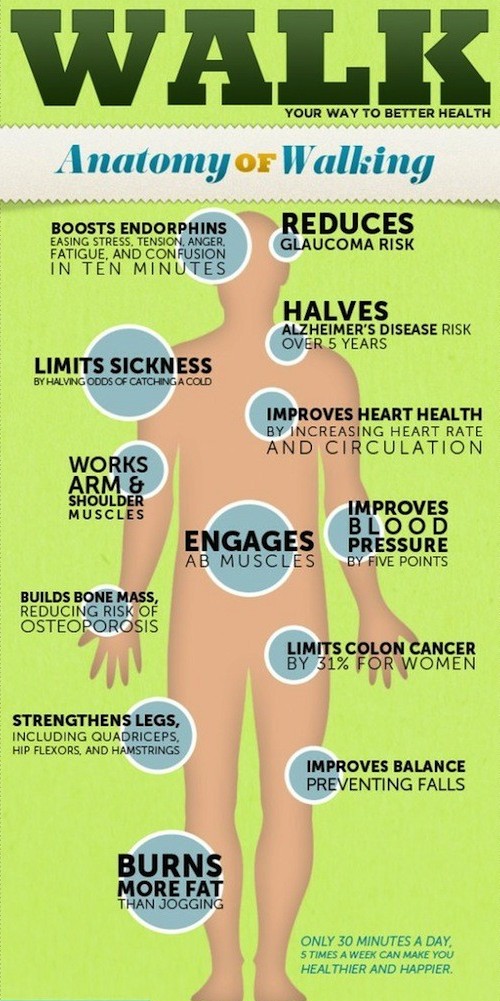Walk Talk Series
Shin Pain
Recap
Each week we have one rest day on Day 7. But you can take a rest day as needed, up to every-other day as you are getting started.
Shin Pain
One of the most common problems when starting a new walking program is getting pain in the shins. This happens because the shin muscles don’t get used much except in walking.

Shin splint pain commonly happens whenever walkers start a walking program, start walking faster, change their shoe style, or change their stride. Shin splints are due to an imbalance between the muscles that lift the foot and those that pull it down. Over striding is a common cause of shin splints, as is wearing walking shoes with a relatively high wedge heel. The shin splint pain will eventually go away as you develop your shin muscles and adjust to your new stride.
Your shins include the anterior tibialis muscle, which is on the front of your lower leg. Its action is to flex the foot upwards. This muscle mostly gets a workout in running, walking, and sports like tennis which have a lot of little sprints. It will begin complaining if you suddenly increase your amount or speed of running or walking, often to the point of painful shin splints.
Shin Stretches
Standing Anterior Tibialis Shin Stretch
 I like to call this the toe drag stretch. Standing, you may want to use a hand on a wall or other support for balance Place the foot to be stretched just behind your other foot (which remains squarely on the ground), with the toe of the stretching foot touching the ground Keeping your toe firmly on the ground, pull the stretching leg forward so you feel a stretch from the top of your stretching foot through your shins. It often helps to bend both knees slightly Once you feel a good stretch, hold it for 15-30 seconds Repeat with the other foot
I like to call this the toe drag stretch. Standing, you may want to use a hand on a wall or other support for balance Place the foot to be stretched just behind your other foot (which remains squarely on the ground), with the toe of the stretching foot touching the ground Keeping your toe firmly on the ground, pull the stretching leg forward so you feel a stretch from the top of your stretching foot through your shins. It often helps to bend both knees slightly Once you feel a good stretch, hold it for 15-30 seconds Repeat with the other foot
Today’s Walk
- 15-30 minute walk – at a comfortable pace
- Warm up with 5 minutes at a very easy pace
- Find a safe spot with a wall or pole to do a 5 minute easy stretching routine
- Now resume your walk at a comfortable pace
- End with 5 minutes of gentle stretching
Advanced Walkers
Easy walk 3 mile walk at 65 – 70% of your max heart rate.
Measurement For Goals
If you have chosen your goal, and you think it is realistic. Decide how you will measure it. If it is a weight loss goal, select a goal weight or a goal size or measurement. It may be a speed – such as a mile in 12 minutes, or a distance – to complete a marathon.
If you plan to eat less, also think of eating better. In the same number of calories, eat foods that are packed with vitamins and fiber rather than empty calories. Think colorful – deep green vegetables, oranges, red tomatoes and peppers.
Something to think about
Stretching and exercise may improve sleep quality in overweight, postmenopausal women. Studies show that morning exercise can make you sleep better at night.
Research suggests that sitting slows the metabolism and may contribute to obesity, cardiovascular disease, type 2 diabetes and metabolic syndrome. How can you sit less?
It has been proven that exercising can slow down you aging process. Research shows adults who are physically active in their 50s and early 60s are about 35 percent less likely to die in the next eight years than those who are sedentary. For those who have a high heart risk because of diabetes, high blood pressure or smoking, the reduction is 45 percent.





